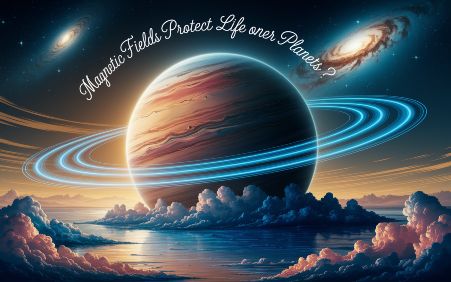Scientists now study exoplanet atmospheres to find alien microorganisms in distant star systems. New telescopes help this search. Each atmosphere gives clues about life beyond Earth. Alien microorganisms may live in clouds gases or deep air layers.
The Role of Atmospheres in Alien Microbial Life
Atmospheres shield planets from deadly space radiation. They also hold gases that alien microorganisms need for life. Some exoplanet atmospheres contain water vapor. Others have methane or carbon dioxide. These gases can support strange life forms. Each alien atmosphere brings new hope to find living microbes.
Pressure and Temperature Influence Survival
Alien microorganisms in distant star systems need stable pressure to survive. Some exoplanets have that. Their atmospheres may help microbes stay alive. Too much pressure could destroy them. But balanced conditions protect life. Temperature also matters. Hot planets may hold heat-tolerant microbes. Cold ones may protect frozen but living cells.
Radiation Shielding Helps Microbial Growth
Atmospheres on distant planets block ultraviolet rays. This helps alien microorganisms grow. Earth’s ozone layer works like that. Other planets need similar protection. If the radiation is too strong microbes may die. But some can adapt. Their survival shows how atmospheres support life far from Earth.
Chemical Signatures That Indicate Possible Life
Alien microorganisms need certain chemicals. Scientists look for biosignatures like oxygen and methane. These gases may suggest microbes breathe or digest. Some atmospheres have these gases together. That could mean living organisms release them. Studying this helps us learn about life in distant star systems.
Methane and Oxygen Together Raise Hope
Methane alone may come from volcanoes. Oxygen may come from sunlight. But both together hint at life. Alien microorganisms might produce them. This mix gives strong clues. Scientists use this pattern to target planets for further study. It is one step closer to proof.
Carbon Dioxide May Support Photosynthetic Life
Some alien microorganisms use carbon dioxide. They absorb it and make energy. Exoplanets with much carbon dioxide might support such life. These microbes could live in upper clouds or warm regions. Carbon dioxide also helps maintain heat. That helps alien life survive in cold star systems.
Diverse Planet Types Offer Unique Possibilities
Not all exoplanets look like Earth. Some are gas giants. Others are rocky and small. Each has a different atmosphere. Alien microorganisms could adapt to many environments. Distant star systems have many planet types. Each one might hide alien life.
Gas Giants May Hold Microbes in Clouds
Some gas giants have thick atmospheres. Their clouds may contain alien microorganisms. These clouds protect them from radiation. Heat from below may provide energy. Microbes may float in stable layers. Distant star systems often have gas giants. They may host strange life forms.
Super-Earths Provide Stable Conditions
Super-Earths have strong gravity. They may hold thick atmospheres. This helps protect alien microorganisms. Such planets may have water vapor. They also may trap heat. That helps microbial life thrive. These planets exist in many star systems.
Technologies That Help Study Exoplanet Atmospheres
New telescopes help explore exoplanet atmospheres. They study light passing through gases. This light shows chemical details. These tools help find signs of alien microorganisms in distant star systems. New missions launch soon. They will scan many new planets.
James Webb Space Telescope Offers Key Insights
James Webb studies far planets. It finds water and methane in atmospheres. This telescope helps locate potential life zones. Its power sees details in faint starlight. Webb changes how we search for alien microorganisms.
Future Missions Target Life Detection
Many missions will explore more exoplanets. They will scan more atmospheres. They will focus on finding biosignatures. These missions aim to detect alien microorganisms in distant star systems. With better tools more discoveries will happen.
Atmosphere Layers That Could Support Life
Atmospheres have layers. Some protect from heat. Others block harmful rays. Alien microorganisms may live in stable layers. These zones offer shelter and energy. Each layer could support unique microbes. Distant star systems offer many such planets.
Upper Atmospheres Offer Stability
High layers may hold clouds and mild temperatures. They may shield alien microorganisms from danger. These layers have thin gases. Microbes may float there. They may use sunlight or gas for energy.
Deep Layers Could Harbor Heat-Loving Microbes
Lower layers trap heat. Some may be hot but stable. Microbes could use this heat. They may survive without light. Alien microorganisms may feed on chemical reactions in these layers. These zones could support alien life.
Earth Extremophiles Offer Clues
Some Earth microbes live in harsh places. They help us understand alien microorganisms. Some live in acid. Some live in ice. These examples guide scientists. Distant star systems may host similar life.
Thermophiles Love Heat and May Live Elsewhere
Some microbes like heat. They live near volcanoes. Similar organisms may live in hot exoplanet atmospheres. They might feed on gases. They survive where others die. Their example gives hope.
Acidophiles Show Survival in Harsh Gases
Some microbes love acid. They live in gas clouds on Earth. Alien microorganisms may do the same. Distant star systems may hold acidic atmospheres. Microbes there may use acid to grow.
Evolution May Shape Alien Microorganisms Differently
Alien microorganisms in distant star systems may not look like Earth microbes. Their bodies may adapt to different gases. Evolution may shape strange life. Atmospheres may affect their growth and form.
Gravity and Gas Pressure Shape Body Structure
Higher gravity may create flat microbes. Thick air may shape how they breathe. Different pressures may affect cells. Alien microorganisms may grow wide not tall. Their shapes reflect the atmosphere.
Gas Types May Lead to Unique Breathing Systems
Some microbes breathe methane. Others may breathe hydrogen. Alien microorganisms may not need oxygen. Their breathing fits the gases around them. Distant star systems give many options.
Pros and Cons of Searching for Life in Exoplanet Atmospheres
| Pros | Cons |
|---|---|
| Many atmospheres may hold clues | Distance makes study very hard |
| New tools offer deep analysis | Chemical signs can mislead |
| Microbes may live in clouds | Life may be very rare |
| Helps us learn about evolution | Some data may be incomplete |
| Expands our view of biology | Some planets have no atmosphere |
Challenges in Studying Alien Atmospheres
Alien microorganisms in distant star systems remain hard to detect. Some atmospheres confuse sensors. Others have no clear biosignatures. Light signals may be faint. New tools must overcome these issues. The search is long. But each step helps.
Cloud Layers Block Signals
Clouds reflect light. That hides chemical signs. Alien microorganisms may hide behind clouds. Scientists use models to guess what lies below. Better sensors may solve this.
Mixed Signals May Fool Instruments
Some gases look like life signs. But they come from volcanoes. This creates false hope. Alien microorganisms produce real signals. But separating them is hard.
Hope for Future Discoveries
Despite setbacks hope grows. Alien microorganisms in distant star systems may be closer than we think. Each mission brings new data. New planets appear each year. Better tools improve our search. Atmospheres offer the best clues.
AI May Help Analyze Atmospheres
Machine learning finds patterns fast. AI may find biosignatures. It compares millions of atmospheres. It flags the best candidates. This helps scientists focus.
Citizen Scientists Add Support
People at home help scan data. They help find planets. They find strange signals. This support makes discovery faster. It brings more eyes to the sky.
FAQs
What gases help support alien microorganisms?
Gases like methane oxygen and carbon dioxide help support alien microorganisms in distant star systems.
Can alien life survive in gas giants?
Yes alien microorganisms may survive in thick clouds of gas giants in distant star systems.
Why are atmospheres important for life?
Atmospheres protect alien microorganisms from space radiation and provide needed gases in distant star systems.
How do scientists detect atmospheric life signs?
They study starlight passing through atmospheres and look for gases that suggest alien microorganisms exist.
What makes a planet a good life candidate?
A planet with stable pressure and protective gases may support alien microorganisms in distant star systems.





